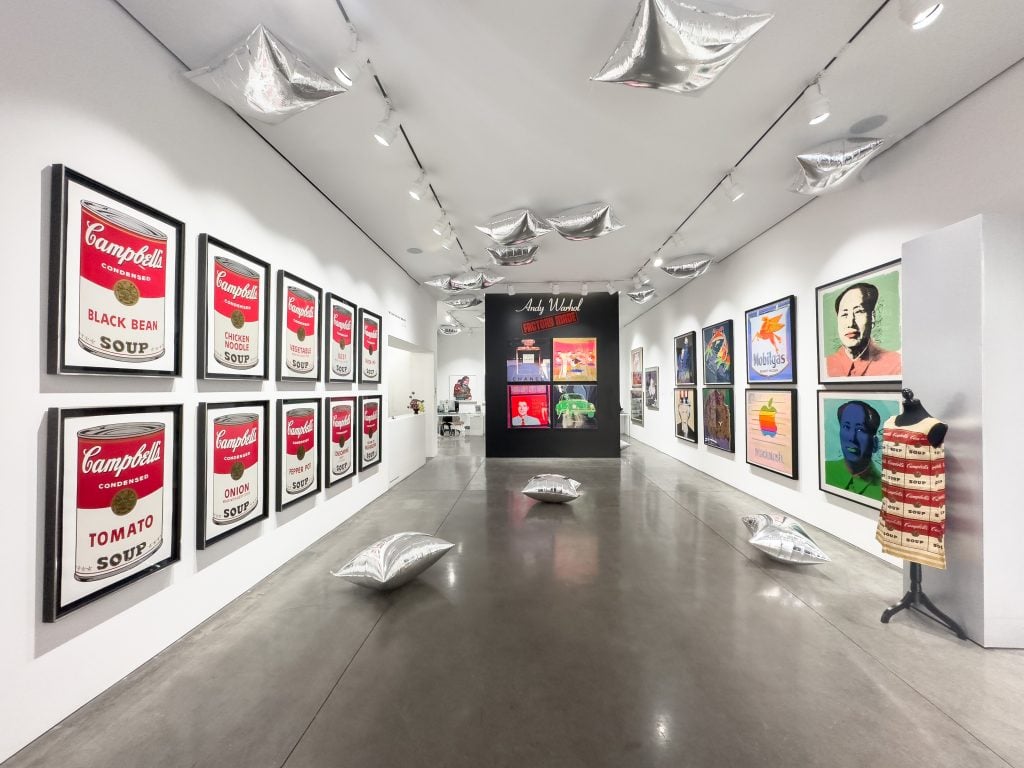A version of this article originally appeared in The Back Room, our lively recap funneling only the week’s must-know art industry intel into a nimble read you’ll actually enjoy. Artnet News Pro members get exclusive access—subscribe now to receive the newsletter in your inbox every Friday.
The art trade has been reeling from President Trump’s “Liberation Day” tariffs. The sweeping tariffs—fees assessed on imported goods—include a base level of 10 percent that will apply to most countries from April 5, with higher duties on around 60 other countries, including some of the U.S.’s biggest trading partners, from April 9.
For the art world, the biggest issue is that a lot remains unknown. Let’s take a look at what we do—and don’t—know.
What We Do Know
For now, the list of goods to which U.S. tariffs apply does not include artworks. But other countries have targeted art in retaliatory tariffs on U.S. goods. That includes the U.K., which on Thursday afternoon dropped a 417-page list of items that could be slapped with import taxes in response to Trump’s 10 percent tariffs on U.S. imports of U.K. goods.

A chart that shows the “reciprocal tariffs” the U.S. is charging other countries are on display at the James Brady Press Briefing Room of the White House on April 2, 2025 in Washington, DC. Photo: Alex Wong/Getty Images.
Included are paintings, drawings, and sculptures of any material that are under 100 years old as well as photographs, prints, and other printed matter. Camera lenses and equipment are also included, as are wooden frames for paintings, photos, or similar objects.
The U.K.’s business secretary, Jonathan Reynolds, set a four-week deadline and said action would be “paused” if a better tariff deal is struck with the U.K. before then.
Noticeably absent from Trump’s new list are Mexico and Canada, with whom he has been aggressively sparring over trade since he got into office. In response to Trump’s earlier 25 percent duties, Canada put a 25 percent tax on C$30 billion ($21 billion) worth of U.S. goods in March, and that includes paintings, drawings, photographs, and other decorative works.
The tiff is already impacting the art industry on both sides of the 49th parallel. A dealer in Western New York told me they had pulled their fair booth proposal from Art Toronto this year because it “wasn’t shaping up to be a smart financial move.” Instead, they applied to another regional fair in the U.S.
Alan Ganev, director of Taglialatella Galleries in Toronto, said the tariffs have “slowed down business for us.” His upcoming Andy Warhol exhibition, opening April 10, was an expensive undertaking, he explained, adding that the only way to avoid fronting the tariff costs is by making it a traveling exhibition. This means that when he imported the artworks, he did so with a set timeline for when they would return to the U.S.

Installation view of “Andy Warhol: Factory Made” at Taglialatella Galleries. Courtesy of Taglialatella Galleries.
“Without this setup, we would have to pay 25 percent of the exhibition’s value upfront and then receive a refund for the works that are sent back to the U.S.,” he said. This strategy is only possible since Taglialatella also has U.S. outposts.
What We Don’t Know
The constantly shifting trade landscape, plummeting stock market, and rising tensions between the U.S. and dozens of countries are undermining art firms’ ability to plan effectively.
In the short-term, international participants in major upcoming U.S. fairs, such as Expo Chicago this month and Frieze New York and TEFAF New York next month, may need to double-check their shipping documents. While U.S. tariffs may not currently apply to artworks, uncertainty remains regarding antiquities, decorative objects, and furniture, which may face additional duties. And retaliatory tariffs from other countries may further muddy the waters.
Since the tariffs were implemented by the U.S. and Canada, there hasn’t been enough time to fully observe cost increases. But Ganev anticipates that “we’ll start seeing rising prices, especially when it comes to things like gas, wood for making crates, and other shipping and art-handling expenses.” He advises dealers to be “extremely mindful of costs”—keeping overhead as low as possible and avoiding unnecessary financial risks.
Art logistics companies have emphasized that specific regulations are not yet fully codified and that there may be further changes or clarifications in the coming days. (My colleague Katya Kazakina has a column on how New York dealers are dealing with the uncertainty.)
Edouard Gouin, the CEO and co-founder of the art shipper Convelio, said that the planned removal in May of U.S.’s de minimis threshold—the minimum value of goods subject to duties—is likely to result in fewer goods entering the U.S. This may reduce air freight rates marginally.

A broadcast screen of the Bombay Stock Exchange (BSE) in Mumbai on April 3, 2025, depicts news of U.S. President Donald Trump unveiling sweeping new trade tariffs. Photo: Punit Paranjpe / AFP via Getty Images.
“However, this potential savings will likely be largely outweighed by the additional tariffs imposed on high-value items and increased handling costs resulting from customs complexity—a scenario we already observed following Brexit to a certain extent,” he said.
His recommendations to art firms include documenting all artworks accurately, since tariffs are determined by country of origin—the country where the artwork was physically created. “Clearly indicating this on shipping documents prevents delays and misclassification at customs,” he said. If there are Delivered Duty Paid (DDP) shipments currently in transit, notify recipients immediately that additional customs duties may apply once the new tariffs are fully enforced. Some firms may prefer to delay shipments until the regulations are fully codified and clarified, in which case they may have to take on additional storage costs.
It seems that chaos will continue to reign for now. I’ve noticed more than one recent Reddit thread about how tariffs will affect art and other collectibles—and as any internet user knows, Reddit really is the last frontier for advice. One user said that this moment marks “a paradigm shift” for the global art market, arguing that collectors may become more reluctant to buy, at least internationally.
This may push more dealers and collectors toward regional fairs and auctions, especially in the U.S. Moreover, as Ganev pointed out, galleries with locations in multiple countries will have more admin but will also have more options, meaning smaller outfits are likely to bear the brunt of any impending trade war.
This post was originally published on this site be sure to check out more of their content





